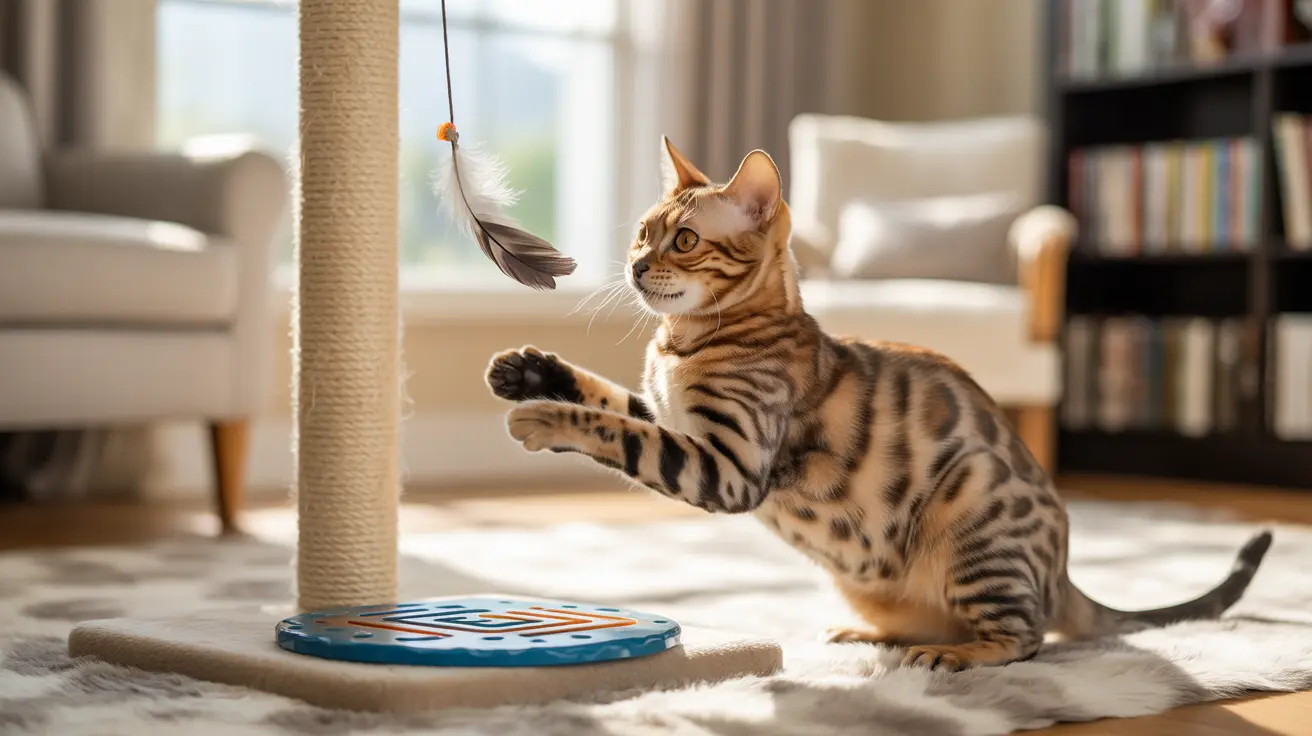Bengal cats are known for their wild beauty and intelligent nature, but their high energy and curious personalities can sometimes lead to challenging behaviors. Learning how to discipline a Bengal cat effectively requires understanding their unique characteristics and using positive reinforcement techniques that work with their natural instincts rather than against them.
In this comprehensive guide, we'll explore proven methods for training and disciplining Bengal cats, focusing on strategies that build trust while correcting unwanted behaviors. Whether you're dealing with furniture scratching, excessive vocalization, or other common issues, these techniques will help you create a well-behaved and happy Bengal companion.
Understanding Your Bengal's Natural Behavior
Bengal cats possess a distinctive combination of domestic cat traits and wild Asian Leopard Cat instincts. Their high intelligence and active nature mean they require more mental and physical stimulation than typical house cats. Understanding these inherent characteristics is crucial for effective discipline.
These exotic felines typically display behaviors such as:
- Strong hunting instincts
- High physical activity levels
- Need for mental stimulation
- Strong territorial tendencies
- Intense curiosity about their environment
Positive Reinforcement: The Foundation of Bengal Training
The most effective way to discipline a Bengal cat is through consistent positive reinforcement. This approach rewards desired behaviors while ignoring or redirecting unwanted ones. Bengals respond particularly well to this method due to their intelligence and desire to please their owners.
Essential Training Tools and Techniques
To successfully train your Bengal, you'll need:
- A clicker for marking desired behaviors
- High-value treats your cat loves
- Interactive toys for redirection
- A consistent training schedule
- Patience and dedication
Creating an Enriched Environment
Many behavioral issues stem from boredom or lack of appropriate outlets for natural behaviors. Providing an enriched environment helps prevent problematic actions and makes discipline easier.
Essential environmental elements include:
- Vertical climbing spaces
- Multiple scratching posts
- Interactive puzzle toys
- Designated play areas
- Safe outdoor viewing spaces
Addressing Common Behavioral Issues
When dealing with specific behavioral challenges, consistent application of appropriate disciplinary techniques is crucial. Always remember that punishment is counterproductive with Bengals.
Counter Jumping and Furniture Climbing
To discourage these behaviors:
- Provide alternative climbing structures
- Use double-sided tape on forbidden surfaces
- Reward use of appropriate climbing areas
- Create designated "cat highways" around your home
Excessive Vocalization
Address vocal behavior by:
- Identifying and addressing the underlying cause
- Ignoring attention-seeking meows
- Rewarding quiet behavior
- Maintaining consistent feeding schedules
Frequently Asked Questions
How do I discipline my Bengal cat without using punishment or yelling?
Focus on positive reinforcement by rewarding good behavior with treats, praise, and attention. Ignore unwanted behaviors and redirect your Bengal to appropriate activities. Never use physical punishment or harsh voices, as these can damage your relationship and create fear-based responses.
What are the most effective positive reinforcement techniques for training a Bengal cat?
Clicker training combined with high-value treats works exceptionally well for Bengals. Use the clicker to mark desired behaviors immediately, followed by a treat. Consistency and timing are crucial for success. Regular training sessions should be short (5-10 minutes) but frequent.
How can I stop my Bengal cat from scratching furniture or jumping on counters?
Provide multiple scratching posts and climbing alternatives, using positive reinforcement when they use these appropriate items. Apply deterrent sprays or double-sided tape to forbidden surfaces, and always redirect to acceptable alternatives when caught in the act.
Is clicker training effective for Bengal cats, and how do I get started?
Yes, clicker training is highly effective for Bengals. Begin by associating the click sound with treats (charging the clicker). Then start marking desired behaviors with a click and immediate treat. Start with simple behaviors and gradually increase complexity.
Why does my Bengal cat misbehave more when bored, and how can I prevent it?
Bengals are highly intelligent and active cats that require regular mental and physical stimulation. Provide interactive toys, puzzle feeders, climbing structures, and daily play sessions to prevent boredom-related misbehavior. Aim for at least 20-30 minutes of active play twice daily.
Conclusion
Successfully disciplining a Bengal cat requires patience, consistency, and understanding of their unique needs. By focusing on positive reinforcement and providing appropriate outlets for their natural behaviors, you can create a well-behaved companion while maintaining a strong, trusting relationship.
Remember that every Bengal is unique, so be prepared to adjust your approach based on your cat's individual personality and responses. With time and dedication, you'll develop a harmonious relationship with your Bengal while effectively managing their behavior.






